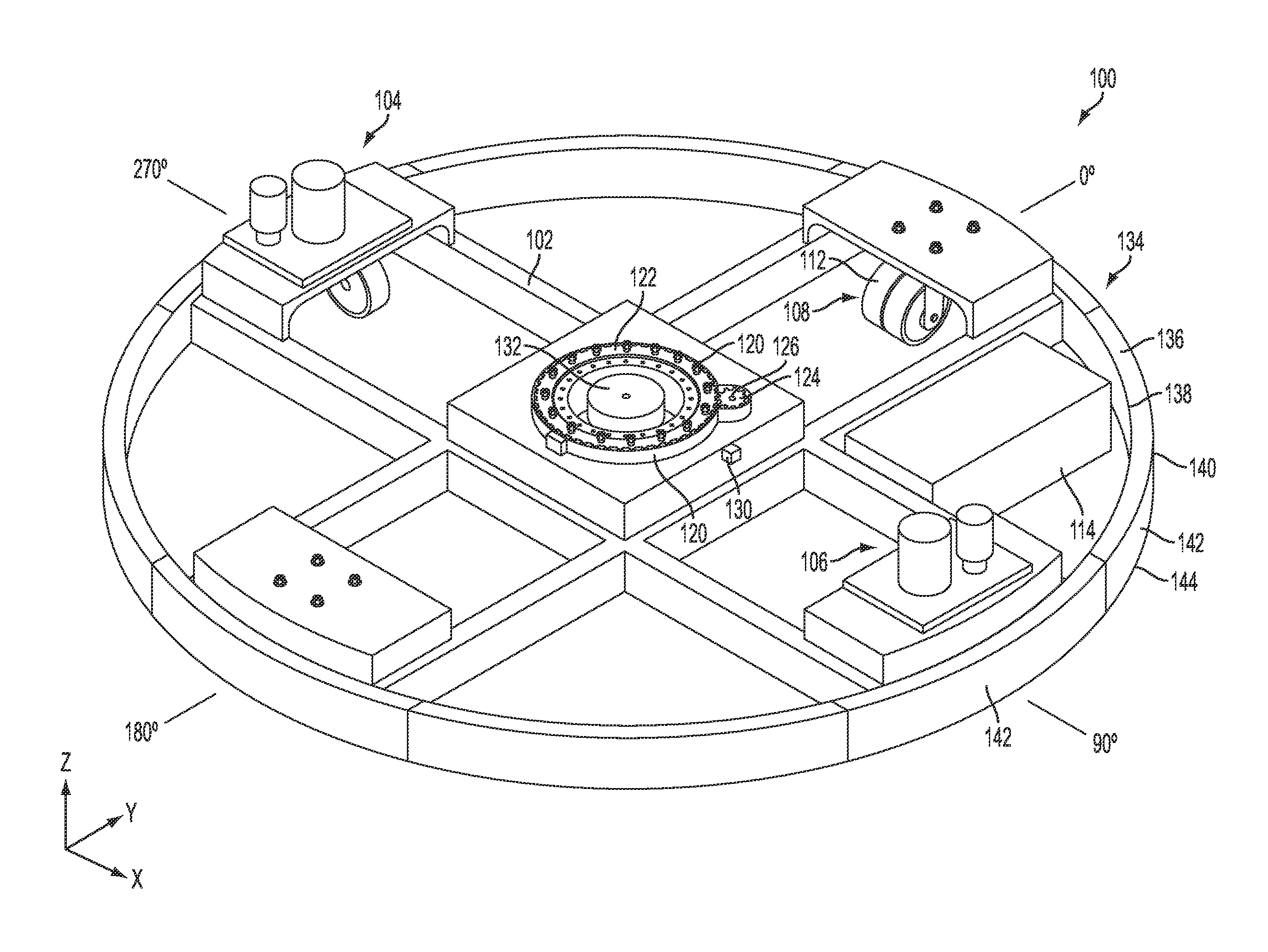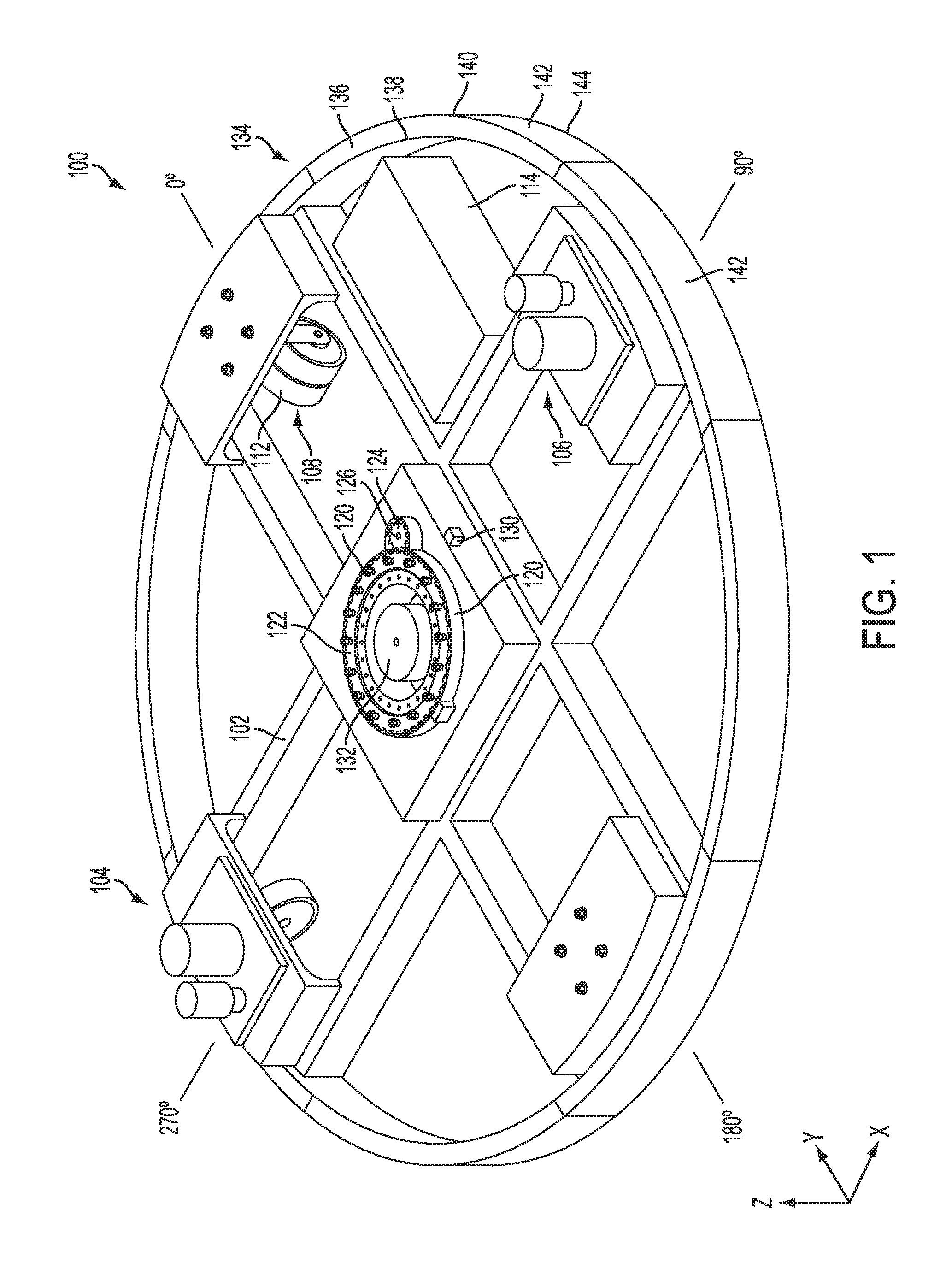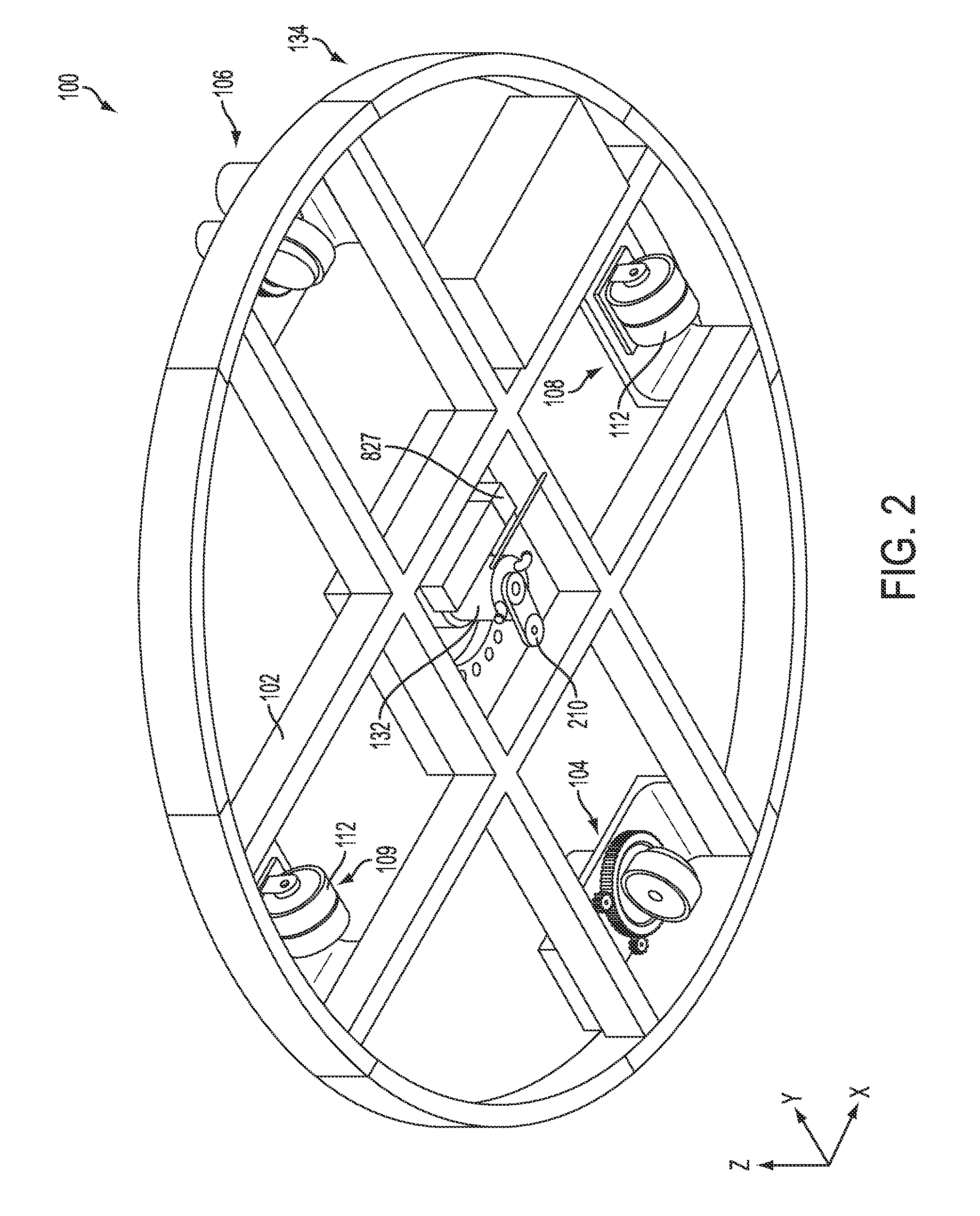Rides making use of these vehicles were not amenable to changes, because of the difficulty of removing, reconfiguring, and reinstalling the tracks.
Additionally, these vehicles were not self-powered.
The movement of the
rope, chain, or cable also caused undesirable
noise.
Moreover, the mere existence of the
rope, chain, or cable posed a physical
threat (due to
tripping or entanglement) to any person departing the safety of the ride vehicle and to the amusement ride operators themselves.
Electrical vehicles of this type presented the serious danger of
electrocution of a patron if the patron left the ride vehicle and stumbled on an electrified third-rail.
Additionally, electrical vehicles of this type were still bound to a track and all of the problems related thereto.
Electrical vehicles of this type also present the serious danger of
electrocution of a patron if the patron made contact with an improperly insulated pole (supporting the contact scraping the electrified grid above the ride) and ground at the same time.
These vehicles moreover typically presented the problem of a lack of safety features that could disable one or all of the vehicles in the ride if a patron was to leave a vehicle during the ride.
Similar lack of safety features were present in electrified vehicles running on tracks.
This type of ride presents two problems in the field of ride vehicles.
First, the locomotion of large battery-operated vehicles consumes a great deal of energy.
Storage of a large amount of energy requires many rechargeable-type batteries.
Second, vehicles that use guide-wires embedded in a floor, similar to vehicles that ride on tracks, are not amenable to changes in the configuration of the vehicle's path of travel, because of the difficulty of removing, reconfiguring, and reinstalling the wires.
Moreover, just like tracks, a vehicle following a guide wire must stay on the guide wire, therefore, it must eventually return to the point from which it began its journey and cannot easily, if at all, follow a path that crosses over itself.
Still other problems confront designers of modern amusement rides.
Patrons are no longer satisfied with simply moving through a ride while being maintained in one plane of travel.
Motion assemblies exist that provide these four degrees of motion to ride patrons; however, due to the very large consumption of power (necessitated by moving a platform that supports the weight of a given number of patrons through space in these directions), known four degree of freedom motion assemblies are coupled to fixed supplies of electrical power.
This limits the mounting of prior art motion assemblies either to fixed locations or to mounts on tracks that use a “
third rail” type of
electrical connection to supply power to the motion
assembly.
The former situation is problematic at least because patrons are usually confined to a
single room (which may move in
yaw, roll, pitch, and heave) while images are projected on the walls within the room.
The latter situation is problematic at least because patrons face all the same issues faced by patrons of older ride vehicles that were confined to riding on tracks; additionally there is the danger of
electrocution if a patron was to leave the ride vehicle and stumble on the electrified third-rail.
Still other problems exist with respect to the motions of prior art vehicles.
The recharging of battery operated vehicles is also problematic.
Rapid charging was not possible, as batteries would overheat if too much charge were pushed into them too quickly.
 Login to View More
Login to View More  Login to View More
Login to View More 


